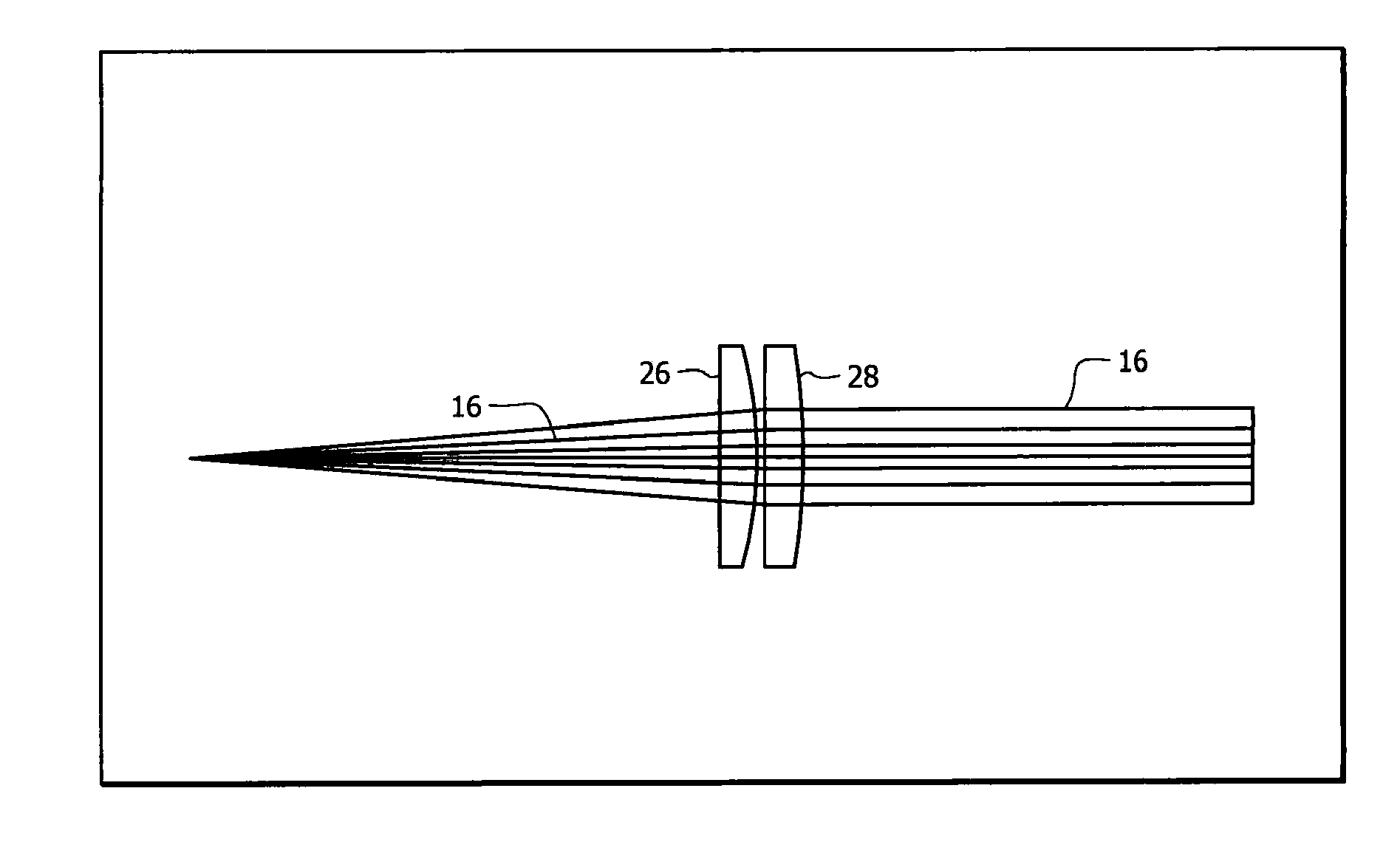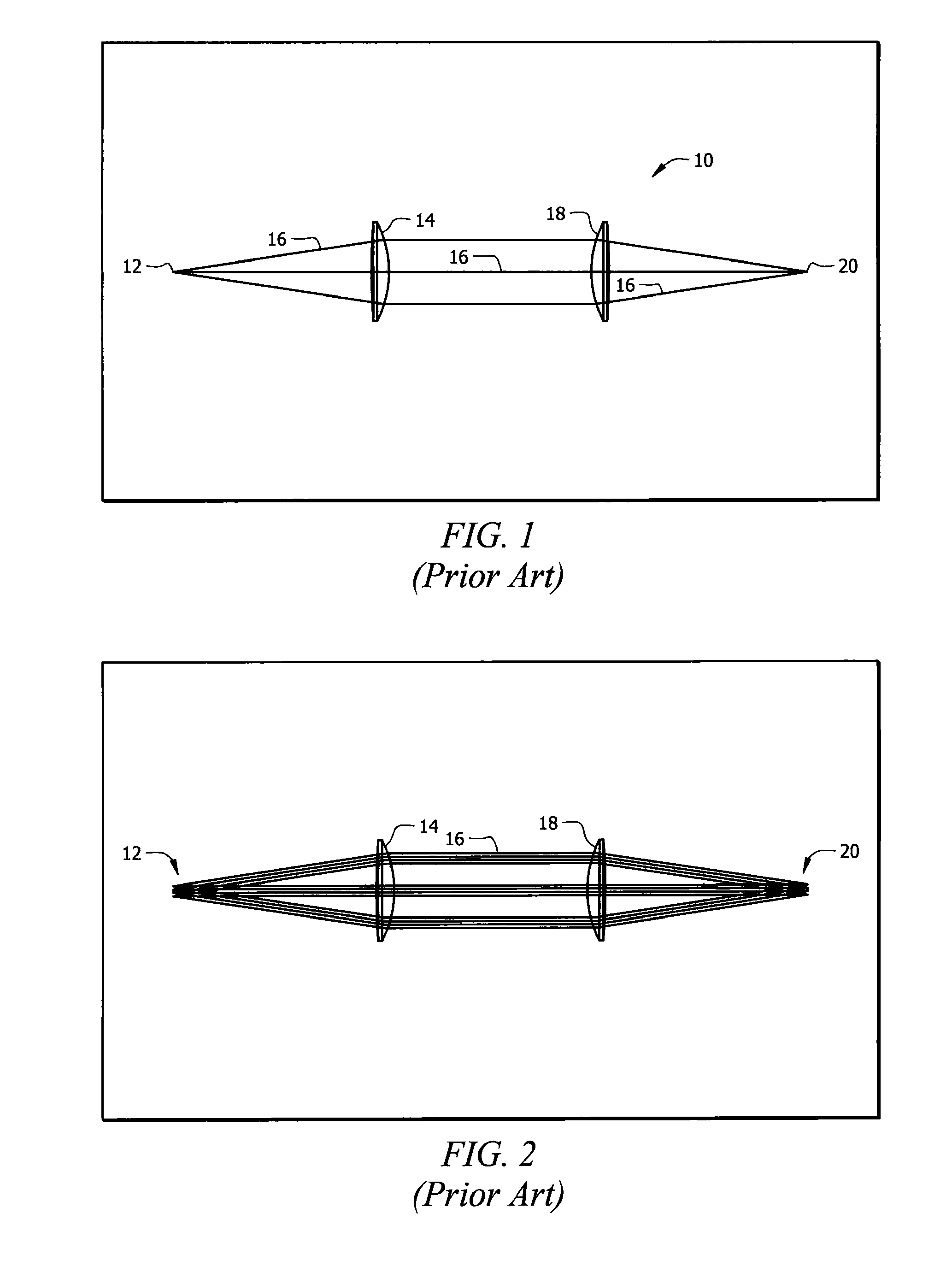Thermally compensating lens for high power lasers
a laser and thermal compensation technology, applied in the field of lasers, can solve the problems of difficult to achieve the effect of improving the optical performance of the lens system, improving the conventional technology, and improving the index of refraction
- Summary
- Abstract
- Description
- Claims
- Application Information
AI Technical Summary
Benefits of technology
Problems solved by technology
Method used
Image
Examples
Embodiment Construction
[0042]FIG. 1 is a diagrammatic representation of a conventional arrangement of lenses, denoted as a whole by the reference numeral 10.
[0043]More particularly, FIG. 1 depicts a high power fiber laser light emitted from the output of a fiber 12. Lens 14 collimates light 16 and lens 18 refocuses the light onto focal point 20 that is formed on the surface of a material to be cut, drilled, scribed, marked, welded or otherwise treated. Both lenses are made from high quality fused silica.
[0044]FIG. 2 depicts the FIG. 1 lenses but a multi-thermal configuration has been set up where lenses 14 and 18 are at ambient temperature of 25° C., followed by increase to 50° C., 75° C. and 125° C. respectively. Focus 20 shifts towards said lens due to the temperature increase. Each configuration is overlaid with an offset of two millimeters (2 mm) to show the variation in focus as the temperature is increased.
[0045]FIG. 3 is an enlarged view of the focus of FIG. 2. The focus shift from the ambient cond...
PUM
 Login to View More
Login to View More Abstract
Description
Claims
Application Information
 Login to View More
Login to View More - R&D
- Intellectual Property
- Life Sciences
- Materials
- Tech Scout
- Unparalleled Data Quality
- Higher Quality Content
- 60% Fewer Hallucinations
Browse by: Latest US Patents, China's latest patents, Technical Efficacy Thesaurus, Application Domain, Technology Topic, Popular Technical Reports.
© 2025 PatSnap. All rights reserved.Legal|Privacy policy|Modern Slavery Act Transparency Statement|Sitemap|About US| Contact US: help@patsnap.com



